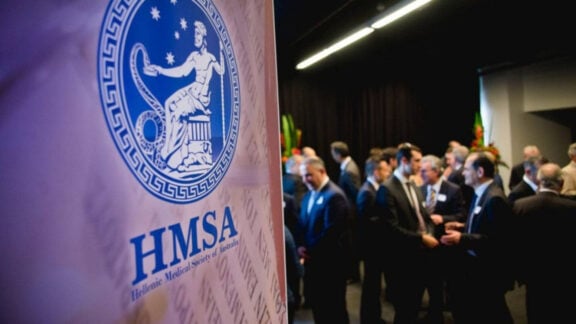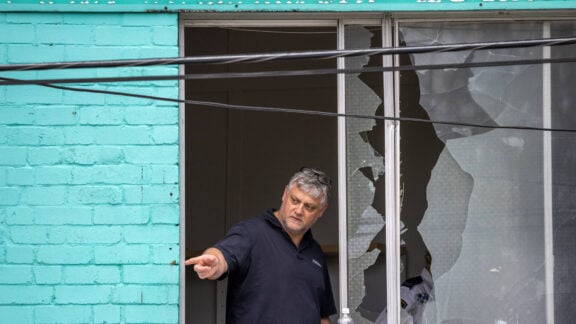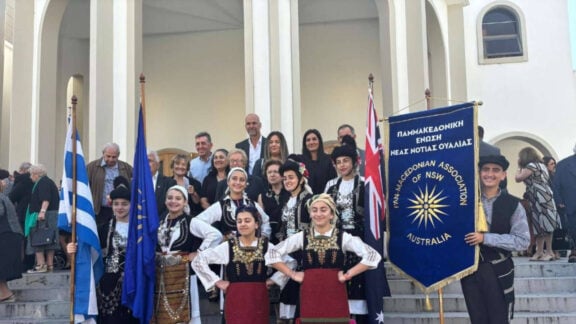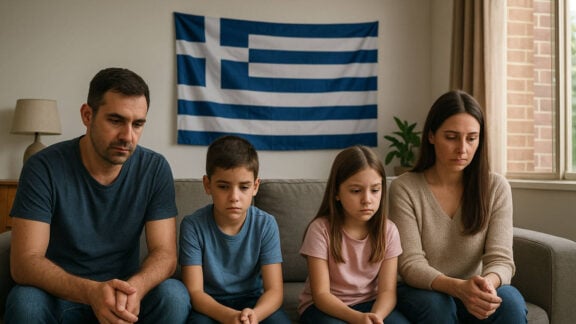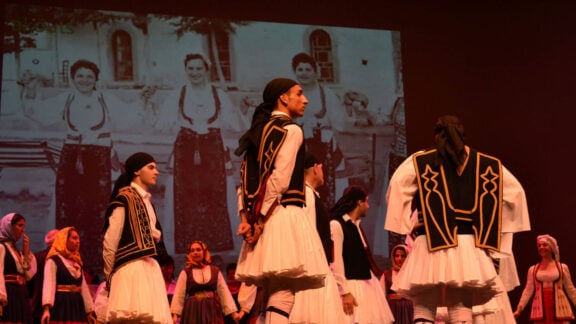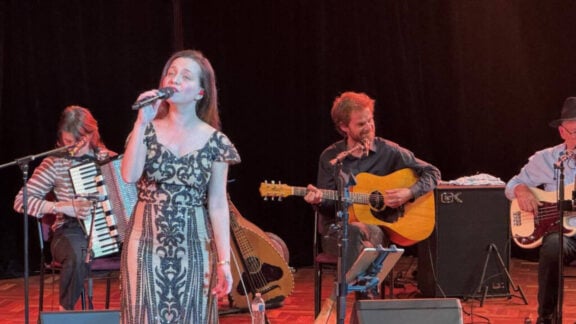In 2016, Maria Kontis was invited to be part of the prestigious Dobell Australian Drawing Biennial at the Art Gallery of NSW. During the opening of the exhibition titled Called Close to Home Kontis overheard a member of the public talking about one of her drawings that was on display.
“Oh my god, are they photographs?” they asked. “Why are there photographs in a drawing exhibition? That’s cheating.”
But Kontis tells Neos Kosmos that the purpose of her art, which includes detailed drawings of old photographs that are rendered in monochrome, is not about fooling people.
“That initial thing, ‘oh is that a photograph?’ that only takes you so far,” she says.
“The drawing itself has to hold your attention beyond that little device. The image itself has to interest you. I’m not trying to trick the viewer. Also, I like that it doesn’t quite measure up to the photo; it’s something else. It hovers in this space between drawing and photography. But when you look closely, in the flesh, you see the drawing, the grainy texture of the paper, the pastel. They don’t have that slick finish that a photograph has, or even the finish that painters can achieve with an airbrush.”
One pay-off the viewer has upon realising that Kontis’ drawings aren’t photographs is that they can then appreciate the painstaking work that has taken place to create her art.
“I always forget that when people first see my drawings, they are usually seeing them reproduced in print or online,” she says.
“It’s a photograph of a drawing of a photograph. So initially there is this effect and then you get drawn into the drawing itself. I think there is something about the time that it takes, the toil, the hard work – it is an important aspect of the work.”

Kontis’ parents migrated to Australia in the 1950s. Her mother is from the Greek island of Ikaria and her father is from Schimatari. Growing up in Canberra, Kontis loved to draw but chose to study English and theatre at the Australian National University. But she couldn’t shake off her passion, and in her mid-20s decided to pursue art, attending the Sydney University’s College of Fine Arts where she was awarded a bachelor degree with Honours.
While at first she drew photographs of family and friends, Kontis revealed that her work is not based on a personal narrative.
“I started stealing little photographs that I liked from my family’s photo albums and borrowing photos from friends,” she says.
“Not because I was interested in doing something that was personal or autobiographical; I was drawn to particular photographs for other reasons. I use these photographs, perhaps like an author might use elements of family and friends and people that they know when they develop their characters. So there is a little bit of truth and little bit of fiction. The work is a poetic response, it’s not literal.”
One particular example of Kontis’ art that is definitely not from her family vault is the work titled Captain Scott: Marching through a blank wall of white that she drew in 2013, a pastel on velvet paper. Kontis says that work in particular expresses one of her main themes – memory.
“I love figures in isolation like the Captain Scott image or the images of the tight rope walker,” she says. “I seem to be drawn to isolated figures within a void. It’s unsettling. I’m really fascinated by the difficulties and tensions associated with the act of recollecting. I used to think memories were something solid I could return to again and again, but now I think differently. Our memories shift and change. We make and remake our memories.”
For Kontis, the image of the English explorer setting off on his second journey to explore the Antarctic is even more haunting as it was his last mission.
“Captain Scott took this photograph himself, in the last moments of his final journey,” Kontis says.
“There is something about those photos that just really gets to me. I love the quality of them. I love the moments of fine detail in this broad expanse, this void. The snow, the ice, they are just stunning. They are also tinged with tragedy as they knew that they were going to die. I found it very moving.”

'As if to remind her of the animal life' (2016). Pastel on velvet paper, 56.5 x 76 cm.

'My master and yours' (2007). Pastel on velvet paper, 30 x 34 cm.

'Mr Urmura' (2004). Pastel on paper, 27.5 x 34 cm.
How Kontis decides on what she will draw is through an image’s imperfection. Which is in contrast to the way photos are taken today with people using the perfect shot to post on Facebook and Instagram.
“For me, that kind of detail is just too much,” she says. “This is why I like old analogue photographs. Sometimes it’s the whole image, sometimes it’s just an element within the image that I want to work with. I love the random photos from people’s family albums. I particularly like the accidents – the cropped figures, the closed eyes, or figures out of focus.”
Another pattern running through her work is that many drawings are from images that were taken between the 1930s and 50s. Where photography was initially restricted to wealthy families having their portraits taken in a studio, everyday families could take their own photos with cameras like an Olympus or a Kodak, she explains.
Kontis’ work has been exhibited all over the world, including at the Museum of Contemporary Art in Sydney, Gitte Weise Galerie in Berlin, the Shanghai Art Museum, and the Tate Modern in London. Despite her vast experience over the past decade, she reveals that starting a new piece for her latest show in Melbourne next month almost makes her feel like she’s a beginner again.
“I always feel uneasy whenever I return to the studio and draw, especially if I have a little break for whatever reason,” she says.
“I feel like I have to remember what to do or relearn what to do. But I love pressure. If I didn’t have any pressure I would spend a lot of time in coffee shops, binge watching TV series and reading. I get a lot done when I have deadlines. I really need them.”

'Manfred Fritsch' (2012). Pastel on velvet paper, 79 x 76.5 cm.

'The Great Doval' (2012) is from a circus Maria saw as a child. Pastel on velvet paper, 79 x 76.5 cm.
See Maria Kontis’ work being exhibited at the Spring 1883 Art Fair at Hotel Windsor (111 Spring St, Melbourne, VIC) from 1-4 August and at the Sydney Contemporary Art Fair at Carriageworks (245 Wilson St, Eveleigh, NSW) from 13-16 September. For more, visit darrenknightgallery.com/artists/kontis/

